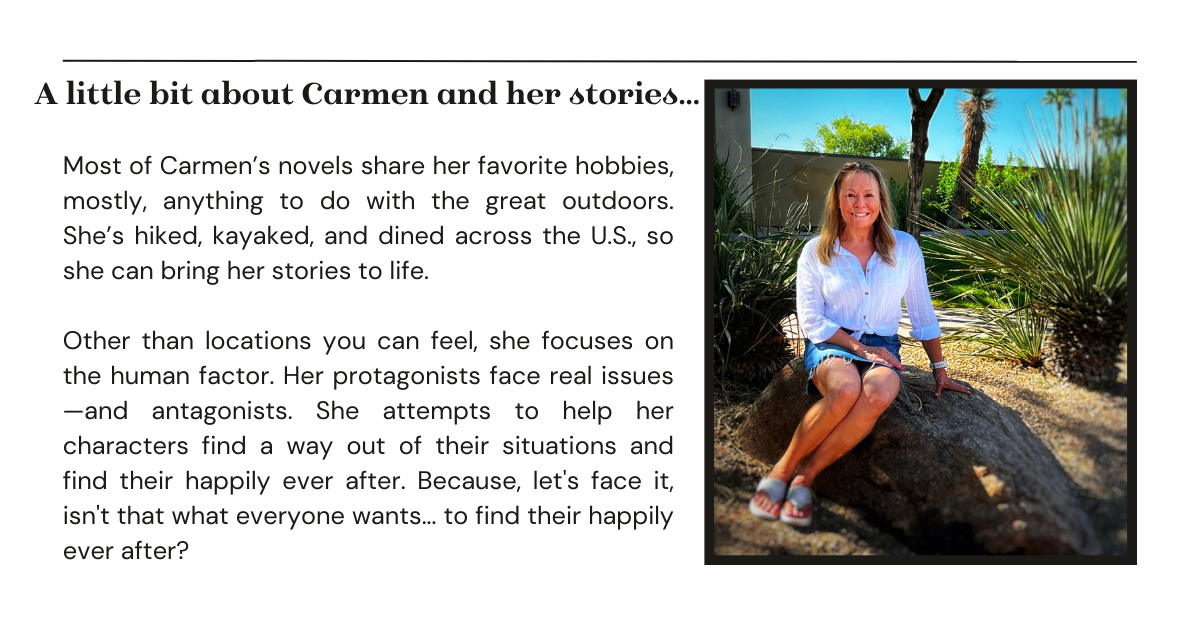|
Sometimes when I choose my next read, I think about setting more than genre. For example, if I choose a book by Nicholas Sparks, I'm thinking about the Carolinas, about deep-rooted secrets and southern gents. If I'm feeling dark and moody, I'll go for a vampire book set in Washington State or maybe a Stephen King book set in the Colorado Mountains. When I was asked to write a romantic suspense with a diverse family element and search & rescue, there was no question that I was going to set my Midnight Sons series in Alaska. The wild, untamed landscapes not only serve as a stunning backdrop but also mirror the tumultuous, mysterious elements that define romantic suspense. Why Setting Matters In storytelling, setting is not just a backdrop. It's a character in its own right. It influences the story's atmosphere, molds its characters, and can even drive the plot. Take, for instance, the moody moors in Wuthering Heights. Could Heathcliff's brooding and tumultuous romance with Catherine have unfolded anywhere else but on those windy, desolate moors? I think not. Setting as a Reflection of Character In my writing, I use setting to reflect my characters' internal landscapes. For example, in my Creatus series, the old, hidden settings (I chose New England) parallel the secretive lives of the creatures they conceal. This intertwining of place and personality challenges the characters, shaping their paths and choices, much like our environments influence us. She Belongs to Me (the entire Southern Collection, for that matter) could not have been set anywhere other than the Carolinas. There's just something about old Southern families and country boys! I swear if Jordan wasn't so "country," his protective nature wouldn't have worked as well. How to Use Setting Effectively Integrate Setting with Plot: The setting should do more than just serve as a backdrop. It should interact with the plot, influencing outcomes and character decisions. Use Sensory Details: Vivid descriptions that engage the senses can make a setting feel real and tangible, pulling readers deeper into the world you’ve created. Reflect Themes and Moods: The setting can enhance the themes or shift the mood of a scene, adding layers to the narrative. The right setting can transform a story from good to unforgettable. It’s not just about where and when; it’s about making those elements work in harmony with every aspect of your tale. As writers, we wield the power to transport our readers, not just emotionally or intellectually, but spatially, into the heart of our stories' worlds. Kind of like the image I chose... While you might be sitting on a beach or in your backyard, my goal is to transport you to another location! For readers and aspiring writers alike, I encourage you to think about the settings in your favorite books. How do they enhance the storytelling? And for my fellow authors, consider how your next setting might just be the key to unlocking your story's full potential. Until next time, Happy Reading and Writing! Carmen Here are the FIRSTS in the three series I mentioned! Follow Carmen's newsletter or author pages to be the first to know about new releases, specials, and writing posts!
0 Comments
Leave a Reply. |
Categories
All
Archives
June 2024
|





 RSS Feed
RSS Feed